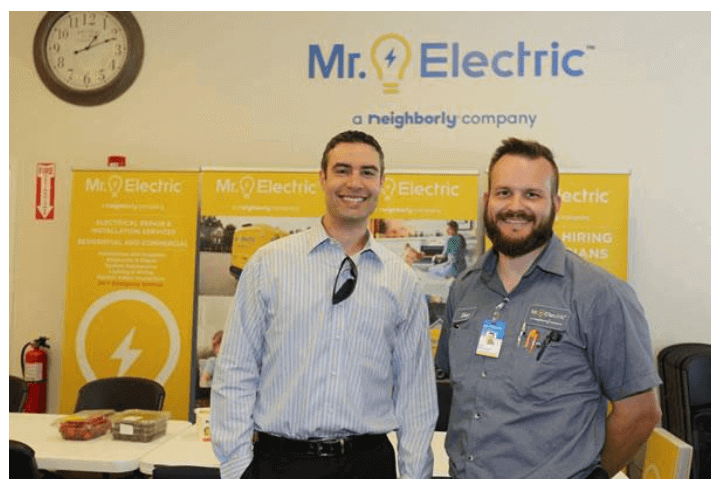Emergency lighting is essential to a building’s safety plan, helping occupants safely evacuate during an emergency. Unfortunately, emergency lighting is sometimes overlooked or misunderstood, leading to potentially hazardous scenarios. Here we cover everything you need to know about emergency lighting – its purpose, types, maintenance, and when to call a professional electrician in Montgomery. Mr. Electric of Katy is available for all your emergency lighting needs.
What Is an Emergency Lighting?
Table of Contents
Emergency lighting systems provide backup lighting during power outages or other emergencies to illuminate escape routes and critical areas to enable safe evacuation from buildings, typically via battery-powered lights that switch automatically when primary power supplies fail. Emergency lighting solutions typically feature battery backup lighting that becomes active automatically should primary power fail; battery-powered lights typically activate automatically if the power suddenly ceases flowing into their respective homes or offices.
Types of Emergency Lighting
There are various emergency lighting systems, each tailored for specific applications. Common examples of emergency lighting systems are:
Exit Signs: Exit signs are an integral component of emergency lighting systems, providing clear instructions for where people should head in an emergency. They should be installed at every exit point within your building so they’re visible at any given moment in case someone needs help quickly.
Emergency Lights: Emergency lights should be strategically installed throughout a building’s corridors and stairwells so occupants may safely evacuate in case of a power outage or another disaster. Their installation ensures adequate illumination to enable safe evacuation without incident.
Standby Lights: Standby lights are utilized in areas requiring constant illumination, such as hospitals and nursing homes. These lights are equipped with sensors designed to activate automatically during power outages to provide enough illumination for healthcare providers to continue providing treatment without interruption from darkness or outage.
Central Battery Systems: These central battery systems are intended to power all emergency lighting in a building from one central point, often serving large properties by providing backup power for several hours.
Self-Contained Systems: Self-contained emergency lighting systems are typically deployed in small buildings or areas with minimal emergency lighting requirements, typically using battery-powered lights integrated directly into the ceiling or walls for emergency lights.
Testing
Emergency lighting systems must be regularly serviced and tested to ensure they provide sufficient illumination during a power outage or other emergencies. Maintenance and testing requirements might include the following:

Monthly Test: Emergency lighting systems should be thoroughly evaluated at least every month to ensure they function as designed. Emergency lights and exit signs should be tested individually at each monthly test to ensure they activate automatically and provide enough illumination.
Annual Testing: Emergency lighting systems should also be tested annually by an expert professional to ensure proper operation for an extended duration of use. During this test, batteries should be completely discharged to verify they can power emergency lighting for as long as necessary.
Battery Replacement: Battery replacement should occur every five years or as their manufacturer recommends to ensure sufficient power for emergency lighting systems during extended power outages. Old batteries could provide insufficient charge to run these emergency lights correctly.
Regular Maintenance: Scheduling regular inspection and cleaning for emergency lighting components is critical in keeping them functioning optimally. It should include thorough examination as part of regularly maintaining this vital system.
Mr. Electric of Katy
At Mr. Electric of Katy, we understand the critical nature of emergency lighting as part of an overall solution to keeping occupants safe during an evacuation or other crisis. So we offer comprehensive emergency lighting services to ensure your system functions optimally. Our licensed and experienced electricians can install, repair and maintain emergency lighting systems to ensure they will automatically activate during power outages or other emergencies, providing adequate illumination. Additionally, we provide regular testing and maintenance services to ensure your emergency lighting system meets all regulatory compliance. Contact us now to discover more about how we an electrician in Cypress can meet your emergency lighting needs.

